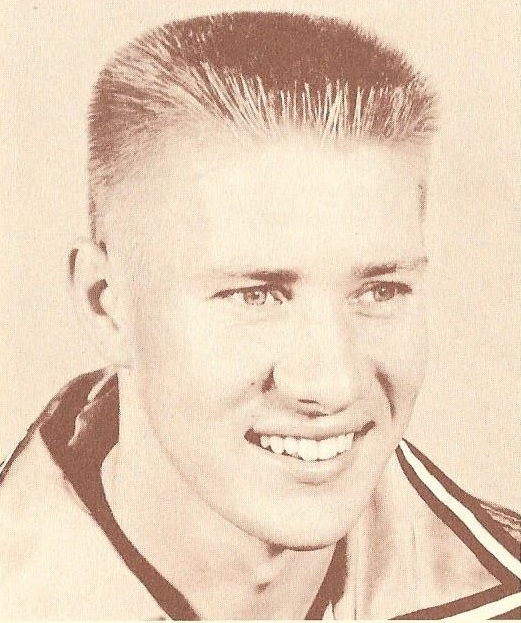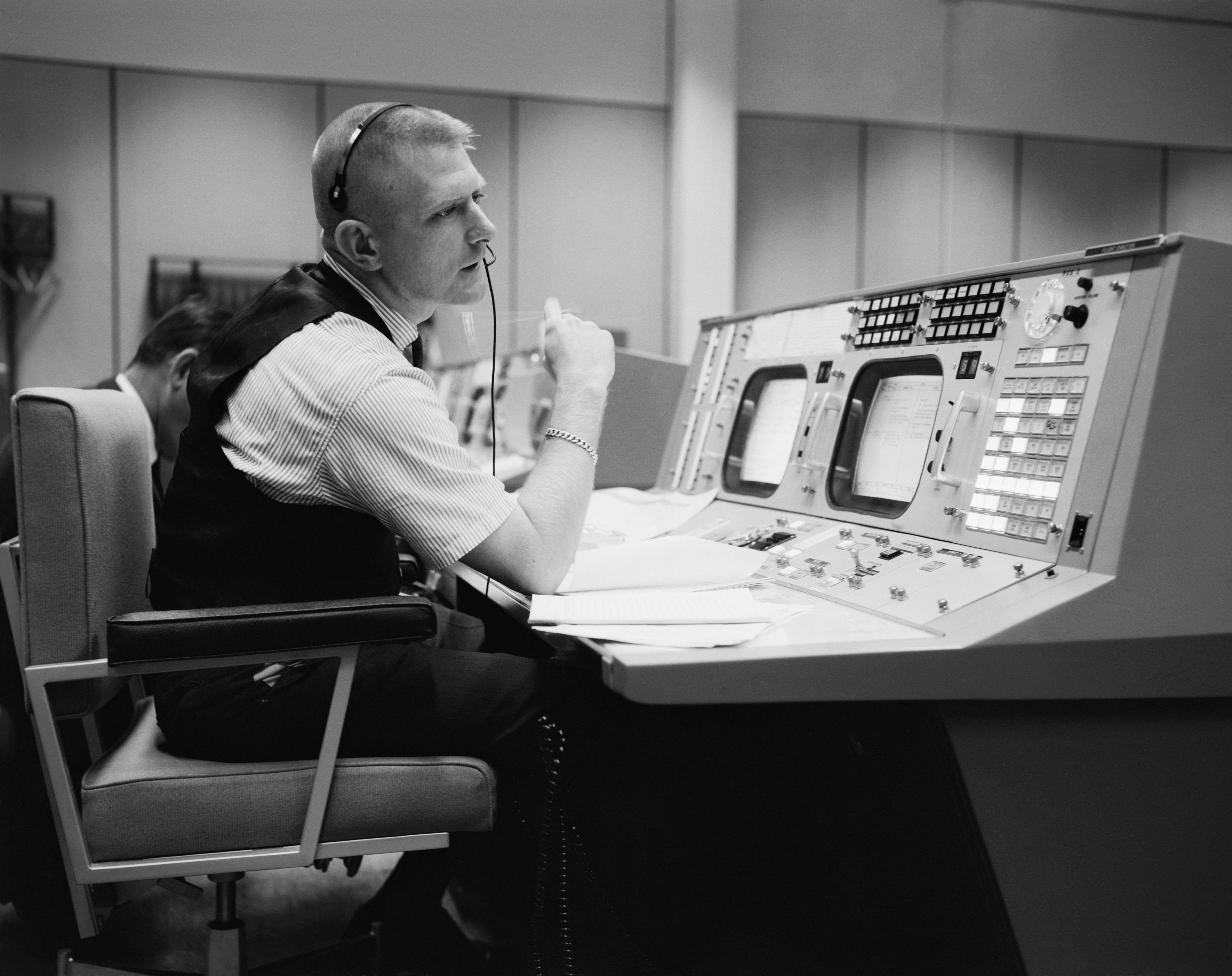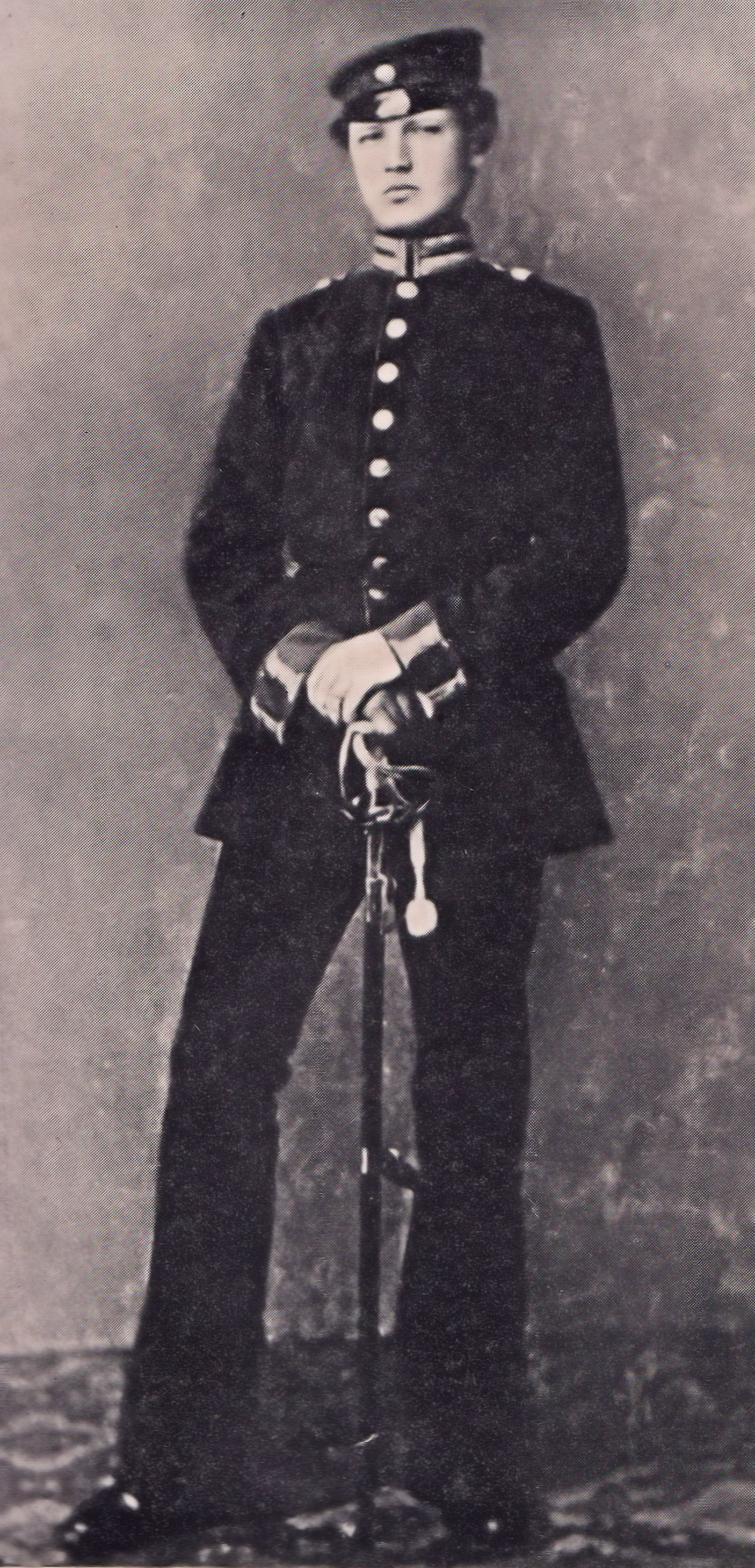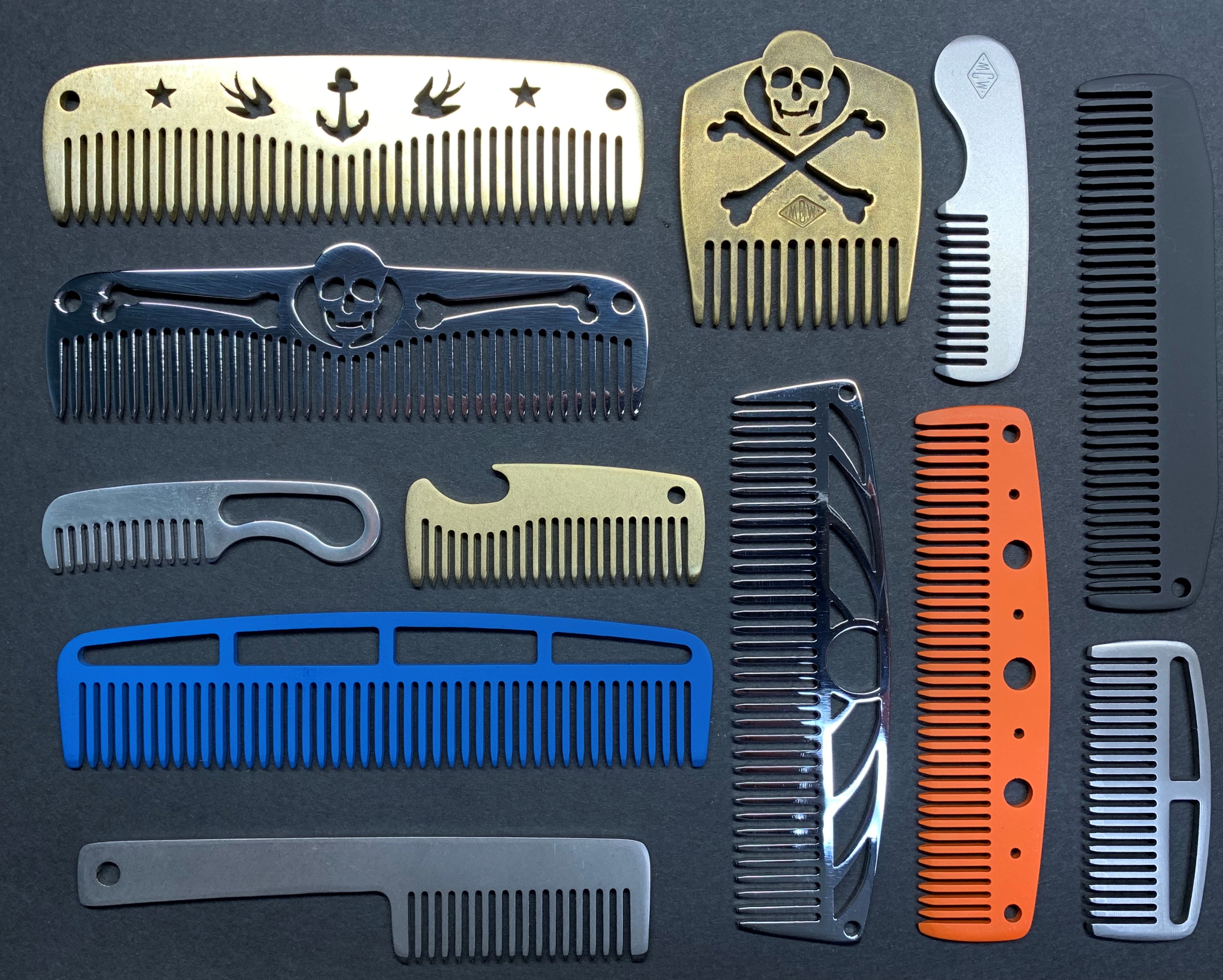|
Flattop
A flattop is a classic hairstyle characterized by short hair on the sides and back of the head, with the top hair cut short and styled to stand upright in a flat, level plane. Styling In the most classic style of flattop for men and boys, the hair on top of the head is styled upright and cut flat from front to back before rounding over the crown at the back of the head. The shortest hair on top, which is at the highest point on the head, is cut to about a quarter of an inch long, resulting in hair at the front being about 3/4 to 1-1/4 inches, depending on the roundness of the head. The back and sides are cut to about a quarter of an inch (usually the same length or slightly shorter than the length of the shortest hair on top) and tapered into the upright hair. The ears are cleanly outlined and the sideburns are squared just above the orifice of the ear. The neckline is cut with a low taper. Other versions popular in Counterculture, counter-culture are left longer on the to ... [...More Info...] [...Related Items...] OR: [Wikipedia] [Google] [Baidu] |
Crew Cut
A crew cut is a type of haircut in which the upright hair on the top of the head is cut relatively short, graduated in length from the longest hair that forms a short pomp (Pompadour (hairstyle), pompadour) at the front hairline to the shortest at the back of the crown so that in side profile, the outline of the top hair approaches the horizontal. Relative to the front view, and to varying degrees, the outline of the top hair can be arched or flattened at the short pomp front and rounded or flattened over the rest of the top to complement the front hairline, head shape, face shape and facial features. The hair on the sides and back of the head is usually tapered Regular haircut#Short, short, Regular haircut#Semi-short, semi-short, or Regular haircut#Medium, medium. A short crew cut is sometimes referred to as a butch cut, butch, though with the exception of variant forms, a butch differs from a crew cut in that the top hair is cut a uniform short length. A long crew cut can be ref ... [...More Info...] [...Related Items...] OR: [Wikipedia] [Google] [Baidu] |
Hi-top Fade
Hi-top fade is a haircut where hair on the sides is cut off or kept very short while hair on the top of the head is grown long. The hi-top was a trend during the golden age of hip hop and urban contemporary music of the 1980s and the early 1990s. It was common among young African American males between 1986 and 1993 and to a lesser extent in the mid–1990s (1994–1996). The hi-top fade is commonly called a crew cut, due to the great likeness of the two styles. In fact, the hi-top fade could qualify as a variation on the flattop. Origin In 1980 Grace Jones and then boyfriend Jean-Paul Goude collaborated on the cover and artwork for '' Warm Leatherette''. It featured her signature flattop/hi-top hair. In the hip hop community throughout the mid-1980s, young African Americans leaned towards Jheri curls or simple haircuts without tapers or fades of any sort. In 1986, rappers like Schoolly D and Doug E. Fresh had the first, somewhat developed, styles of the hi-top fade in hip ... [...More Info...] [...Related Items...] OR: [Wikipedia] [Google] [Baidu] |
Buzz Cut
A buzz cut, or wiffle cut, is a variety of short hairstyles, especially where the length of hair is the same on all parts of the head. Rising to prominence initially with the advent of Hair clipper, manual hair clippers, buzz cuts became increasingly popular in places where strict grooming conventions applied. In several nations, buzz cuts are often given to new recruits in the armed forces or newly incarcerated inmates. However, buzz cuts are also used for stylistic reasons. Overview The buzz cut rose to popularity with the advent of Hair clipper, manual hair clippers by the Serbian inventor Nikola Bizumić in the late 19th century. These clippers were widely used by barbers to chop hair close and fast. The clipper accumulates hair in locks to rapidly remove the hair from the head. This type of haircut was normal where strict grooming conventions were in effect. Buzz cut styles today include the brush cut, crew cut, and flattop. The top of a buzz cut style may be clipped a unif ... [...More Info...] [...Related Items...] OR: [Wikipedia] [Google] [Baidu] |
Gene Kranz
Eugene Francis Kranz (born August 17, 1933) is an American aerospace engineer who served as NASA's second Chief Flight Director, directing missions of the Mercury, Gemini, and Apollo programs, including the first lunar landing mission, Apollo 11. He directed the successful efforts by the Mission Control team to save the crew of Apollo 13, and was portrayed in the 1995 film of the same name by actor Ed Harris. He characteristically wore a close-cut flattop hairstyle and the dapper "mission" vests (waistcoats) of different styles and materials made by his wife, Marta Kranz, for his Flight Director missions. He coined the phrase "tough and competent", which became known as the "Kranz Dictum". Kranz has been the subject of movies, documentary films, and books and periodical articles. Kranz is a recipient of a Presidential Medal of Freedom. In a 2010 Space Foundation survey, Kranz was ranked as the second most popular space hero. Early years Kranz was born August 17, 1933, in To ... [...More Info...] [...Related Items...] OR: [Wikipedia] [Google] [Baidu] |
Gary Thompson
Gary Thompson may refer to: * Gary Thompson (basketball coach) (c. 1932 – 2010), American college basketball coach, head basketball coach at Wichita State University from 1964 to 1971 * Gary Thompson (basketball player), All-American basketball player at Iowa State * Gary Thompson (racing driver) (born 1992), Irish racecar driver * Gary Thompson (soccer) (born 1945), Canadian international and North American Soccer League player * Gary Scott Thompson (born 1959), American TV producer See also * Garry Thompson (other) * Garry Thomson Robert Howard Garry Thomson CBE, (13 September 1925 – 23 May 2007) was a conservator and a Buddhist. Biography Robert Howard Garry Thomson (known as Garry Thomson) was born on Carey Island, Malaya, where his father was a planter producing ... (1925–2007), conservator and a Buddhist * Gary Thomson, Irish cyclist {{hndis, Thompson, Gary ... [...More Info...] [...Related Items...] OR: [Wikipedia] [Google] [Baidu] |
Paul Von Hindenburg
Paul Ludwig Hans Anton von Beneckendorff und von Hindenburg (2 October 1847 – 2 August 1934) was a German military and political leader who led the Imperial German Army during the First World War and later became President of Germany (1919–1945), President of Germany from 1925 until his death in 1934. He played a key role in the Nazi seizure of power in 1933 when he appointed Adolf Hitler as Chancellor of Germany. Hindenburg was born to a family of minor Prussian nobility in the Grand Duchy of Posen. Upon completing his education as a cadet, he enlisted in the Third Regiment of Foot Guards as a second lieutenant. He saw combat during the Austro-Prussian War, Austro-Prussian and Franco-Prussian War, Franco-Prussian wars. In 1873, he was admitted to the prestigious Preußische Hauptkadettenanstalt, War Academy in Berlin, where he studied before being appointed to the General Staff Corps. In 1885, he was promoted to major and became a member of the German General Staff. After ... [...More Info...] [...Related Items...] OR: [Wikipedia] [Google] [Baidu] |
Life (magazine)
''Life'' (stylized as ''LIFE'') is an American magazine launched in 1883 as a weekly publication. In 1972, it transitioned to publishing "special" issues before running as a monthly from 1978 to 2000. Since then, ''Life'' has irregularly published "special" issues. Originally published from 1883 to 1936 as a general-interest and humor publication, it featured contributions from many important writers, illustrators and cartoonists of its time, such as Charles Dana Gibson and Norman Rockwell. In 1936, Henry Luce purchased the magazine, and relaunched it as the first all-photographic American news magazine. Its place in the history of photojournalism is considered one of its most important contributions to the world of publishing. From 1936 to the 1960s, ''Life'' was a wide-ranging general-interest magazine known for its photojournalism. During this period, it was one of the most popular magazines in the United States, with its circulation regularly reaching a quarter of the U.S. ... [...More Info...] [...Related Items...] OR: [Wikipedia] [Google] [Baidu] |
List Of Hairstyles
This is a non-exhaustive list of hairstyles, excluding List of facial hairstyles, facial hairstyles. Short hairstyles Long hairstyles Long hairstyles may be considered those which reach beyond the shoulders on women, or require long hair to create, and past the chin on men. Any length styles See also * Eponymous hairstyle * Hairstyles in the 1950s * Hairstyles in the 1980s * Hairstyles of Japanese women * List of facial hairstyles * References External links * * {{Human hair Hairstyles, * Fashion-related lists, Hairstyles Arts-related lists, Hairstyles Human biology-related lists ... [...More Info...] [...Related Items...] OR: [Wikipedia] [Google] [Baidu] |
Ivy League (haircut)
An Ivy League, also known as a Harvard Clip or Princeton, is a type of crew cut in which the hair on the top front of the head is long enough to style with a side part, while the crown of the head is cut short. The length of the top hair and the degree of graduation shorter, from the front hairline back, varies with the shape of the skull, density and coarseness of the hair, and the styling preferences of the individual: side-parted crew cut, standard crew cut, brushed forward, etc. On one individual the length and degree of graduation of the top hair might run from one and a half inches at the front hairline, to one half inch at the crown. On another individual, the length and degree of graduation might run from one and a quarter inches at the front hairline to one inch at the crown. The hair on the sides and back of the head is usually tapered Regular haircut#Short, short, Regular haircut#Semi-short, semi-short, Regular haircut#Medium, medium. An Ivy League is traditionally g ... [...More Info...] [...Related Items...] OR: [Wikipedia] [Google] [Baidu] |
Butch Cut
A brush cut is a type of haircut in which the hair on the top of the head is cut short in every dimension. The top and the upper portion of the back and sides are cut the same length, generally between , following the contour of the head. The hair below the upper portion of the sides and back of the head is tapered Regular haircut#Short, short or Regular haircut#Semi-short, semi-short with a clipper, in the same manner as a crew cut. A variant form may have a slight graduation of the top hair longer from back to front or a quickly graduated bit of hair at the front hairline to achieve a little flip up of the hair at the forehead. A brush that is cut at less than inch on top may be referred to as a burr. A brush that is cut at inch or longer on top, and especially one that shows natural curl, depending on length, may be referred to as a short brush cut or brush cut. Brush cuts are traditionally groomed with hair control wax, commonly referred to as brush wax. Culture A ... [...More Info...] [...Related Items...] OR: [Wikipedia] [Google] [Baidu] |
Electric Clippers
A hair clipper, often individually called the apparent ''plurale tantum'' hair clippers (in a similar way to ''scissors''), is a specialised tool used to cut human hair. Hair clippers work on the same principle as scissors, but are distinct from scissors themselves and razors. Similar but heavier-duty implements are used to shear sheep, but are called handpieces or machine shears. Operating principle Hair clippers are made up of a pair of sharpened comb-like blades in close contact, one above the other, and the sides which slide sideways relative to each other, a mechanism which may be manual or electrical to make the blades oscillate from side to side, and a handle. The clipper is moved so that hair is positioned between the teeth of the comb, and cut with a scissor action when one blade slides sideways relative to the other. Friction between the blades needs to be as low as possible, which is attained by choice of material and finish, and frequent lubrication. Manual clippe ... [...More Info...] [...Related Items...] OR: [Wikipedia] [Google] [Baidu] |
Comb
A comb is a tool consisting of a shaft that holds a row of teeth for pulling through the hair to clean, untangle, or style it. Combs have been used since prehistoric times, having been discovered in very refined forms from settlements dating back to 5,000 years ago in Persia. Weaving combs made of whalebone dating to the middle and late Iron Age have been found on archaeological digs in Orkney and Somerset. Description Combs are made of a shaft and teeth that are placed at a perpendicular angle to the shaft. Combs can be made out of a number of materials, most commonly plastic, metal, or wood. In antiquity, horn and whalebone was sometimes used. Combs made from ivory and tortoiseshell were once common but concerns for the animals that produce them have reduced their usage. Wooden combs are largely made of boxwood, cherry wood, or other fine-grained wood. Good quality wooden combs are usually handmade and polished. Combs come in various shapes and sizes depending on what the ... [...More Info...] [...Related Items...] OR: [Wikipedia] [Google] [Baidu] |










